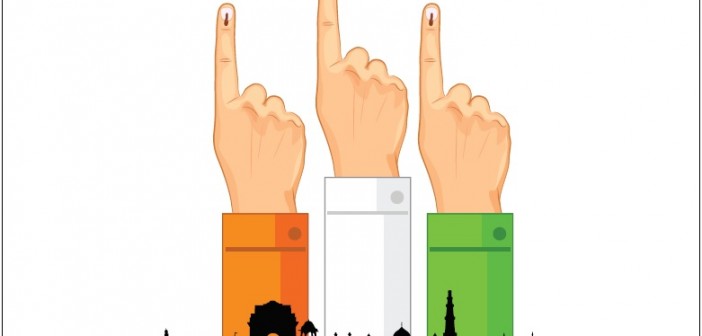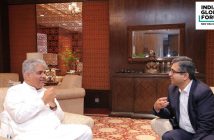Good economics has given rich political returns over the last decade. Will the trend hold in 2017?
In India, conventional wisdom had it, for decades, that good economics makes for bad politics. Some politicians still think caste, religion and populism are more important factors than economic growth.
It is probably this line of thinking that has prompted politicians of all hues – from Congress vice-president Rahul Gandhi to West Bengal chief minister Mamata Banerjee to Uttar Pradesh chief ministerial aspirant Mayawati – to come out all guns blazing against the bold move of Prime Minister Narendra Modi to demonetise high value Rs 1,000 and Rs 500 notes.
Anecdotal evidence from the ground, however, suggests that there is very little public anger against this economically critical, but financially painful, initiative despite concerted efforts by a combined Opposition to whip up popular outrage.
But do the people actually support this move and will such support translate into a political victory for the BJP in the crucial state of Uttar Pradesh, where it is locked in a three-cornered fight with two regional parties?
Recent evidence, however, shows that voters have begun to appreciate and reward politicians who improve their economic lot.
Bihar chief minister Nitish Kumar, who doesn’t have a large political base himself, scored a landslide victory in 2010. Reason: he had delivered double-digit growth, which had visibly improved living standards across his state.
 Former (government of India) Chief Economic Advisor Arvind Virmani’s economic model attempts to analyse and explain this new phenomenon in Indian politics. It posits that a chief minister who, during his five-year term, manages to expand his state’s economy at a pace faster than the previous five years, is more likely than not to get re-elected.
Former (government of India) Chief Economic Advisor Arvind Virmani’s economic model attempts to analyse and explain this new phenomenon in Indian politics. It posits that a chief minister who, during his five-year term, manages to expand his state’s economy at a pace faster than the previous five years, is more likely than not to get re-elected.
This theory provides a plausible explanation for the shock defeat of Atal Bihari Vajpayee in the 2004 general elections. The average growth rate during the Vajpayee years was 3.8 per cent, partly because of a global recession triggered by the Asian financial crisis and the dotcom bust as well as droughts. The growth rate during previous five years was 4.7 per cent.
In fact, almost 75 per cent of all incumbent state governments were voted out of office during this period. But in the five-year period that followed, i.e. 2004 to 2009, the chief ministers of Bihar, Chhattisgarh, Orissa and Madhya Pradesh, who ensured faster economic growth than in the previous period, were all re-elected.
But like many theories, this one, too has its exceptions. Mayawati, as Uttar Pradesh chief minister from 2007-12 ensured a growth rate of 7 per cent, faster than earlier, but still lost the 2012 Assembly elections. On the other side of this argument, Assam chief minister ruled for three full terms despite his poor record on the economic development front.
So, how will the Indian electorate treat Modi for his demonetisation initiative. The pain on the ground is very real and very widespread, but so is the belief in Modi’s promise that the short-term pain is a precursor to longer term gain.
Demonetisation promises many economic benefits over the medium- to long term. Among them, are a sharp reduction in corruption, larger public expenditure on a range of schemes as tax revenues rise from more economic activity coming into the formal economy and a pick-up in GDP growth rates.
But as of now, only a handful of economists realise this. The ordinary Indian either instinctively believes what Modi is saying or he doesn’t.
So who will he/she vote for when the time comes to press a button on an electronic voting machine?
We’ll know on March 11. That day, we will also know whether good economics is good politics in India or whether the older paradigm still holds sway.
Foreign investors, too, will be watching. A victory for the BJP will convince them that the Indian electorate is keen to protect their investments from capricious political interventions.
The article was first published in ‘India Investment Journal’s January edition.







